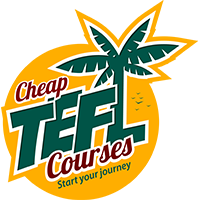
So, you’re interested in finding out exactly what a TEFL teacher needs up their sleeve to be the best English teacher ever? Of course you are, and you’ve come to the right place. To be quite frank, we’ve been doing TEFL for a long time, so we kinda know what we’re talking about. And our absolute favourite thing is to share our tips and tricks with you so that your job can be a little bit easier. So, we decided to put together the ultimate TEFL teacher’s toolbox.
But we’re not talking about whiteboard markers and flashcards. We’re not even talking about discussion activities or games for teens. No, today we’re talking about the teaching approaches, methods and techniques that’ll take you from meh to amazing in the eyes of your students.
Ready? Let’s get started.
PPP
PPP stands for Presentation, Practice and Production and will probably form the basis of most of your lessons – at least for the beginning of your career. It is a lesson structure which is super easy to adapt for any grammar, vocabulary or functional language lesson. All you need to do is present the language in context, drawing attention to the form, meaning and function. Then you give your students a chance to practise their accuracy of the language by doing a controlled practice exercise, such as a gap-fill. Finally, you set up a free practice exercise which allows the students to use the language in a free context which focuses on fluency rather than accuracy.
Read more: What Exactly is PPP?

Guided discovery
Guided discovery is a teaching method which is utilized in the EFL classroom in order to make our classrooms more learner-centred. It involves guiding our students to discover the rules of English rather than us spoon-feeding them. Makes sense, doesn’t it? In practice, what it means is presenting the language and asking the students questions to figure out the form, meaning and usage of the language instead of simply telling them.
Read more: Guided Discovery in the EFL Classroom
Elicitation
Elicitation is a technique which you should use in every, single EFL lesson you teach. Many people misunderstand elicitation, and many people either overdo it or do it badly. That’s to be expected, because elicitation is a tricky technique which can take a while to master. Basically, to help us make our classrooms more learner-centred we need to incorporate our learners in every step of the lesson. Instead of giving the learners information, we can ask questions to get them to come up with the answers we are looking for. Elicitation questions can be as simple as Where do you usually hang out with your friends? if you’re on the topic of free time or places around town, or What is the adjective form of this? if we are looking at vocabulary. This keeps them engaged in the lesson as they are constantly being asked to contribute.
Read more: When Elicitation Works in the EFL Classroom and When It Doesn’t
Scaffolding
Scaffolding is what we do to make sure our lessons are pitched at the right level for our students. If you understand that scaffolding is the structure at the side of a building which is used during construction, you should understand how scaffolding works. As our students learn, they may need more help to progress in their learning. What we do to help them is the scaffolding. This can be in the form of additional questions or exercises or prompts.
Dogme
This is something every EFL teacher should have up their sleeve when they don’t have time to waste prepping lessons. Dogme is a paperless and prep-light approach to teaching. In other words, no handouts, worksheets or coursebooks are used in the lesson. Instead, the teacher initiates a conversation with the students which eventually pans out into a cohesive lesson. Essentially, the students dictate the topic and the language of the lesson, while the teacher thinks on their feet to direct the lesson into something worthwhile.
Questions
For a TEFL teacher, questions are everything! We don’t like to spoon-feed our students so we try to allow enough space for our students to come up with the questions. When your students ask questions, it might mean they do not understand something but it also means they are thinking and considering the language. We want to encourage our students to engage with the language like this because it will help consolidate the language for them.
Silence
Not your students’ silence, but your silence. It might seem odd but in EFL classrooms we prefer our students to speak more than we do. After all, who needs the practice more? However, it’s very easy as a teacher to fall into the trap of talking all the time. This is often train-of-thought talking where you speak your thoughts out loud. This only makes your students very confused, as they try to translate everything you are saying! It also usually means you end up answering the questions you ask, so your students don’t get a chance to say anything. Take a deep breath and embrace the silence!
IATEFL
IATEFL is the International Association of TEFL teachers which aims to link, support and develop English teaching professionals all over the world. They host events and meet-ups and if you are a member of any of their Special Interest Groups (such as the Business English SIG or the Leadership and Management SIG) you get access to amazing resources, events and people. Continuous Professional Development is important in a field such as teaching which is changing all the time and being a part of IATEFL is a great way to make sure your CPD is up to scratch.
Time out
You may or may not realise this, but teaching is hard work. It is physically and mentally draining. You are either spending time putting together amazing lessons, or you are jumping around singing and dancing with kindergarten children 5 hours a day, or you are spending your evenings marking homework and tests. Teachers always have the best interests of their students at heart so they generally go the extra mile when it comes to their work. If this sounds like you, be sure to take time away from work, get enough rest, take sick days when you need it – and don’t forget about holidays! A burnt-out teacher is no good to anyone.
Read more: How to Avoid Burnout as a TEFL Teacher
That’s it! Just a few things you need in your teaching toolbox to make sure you are the best teacher you can be.
The post The TEFL Teacher’s Toolbox appeared first on .


